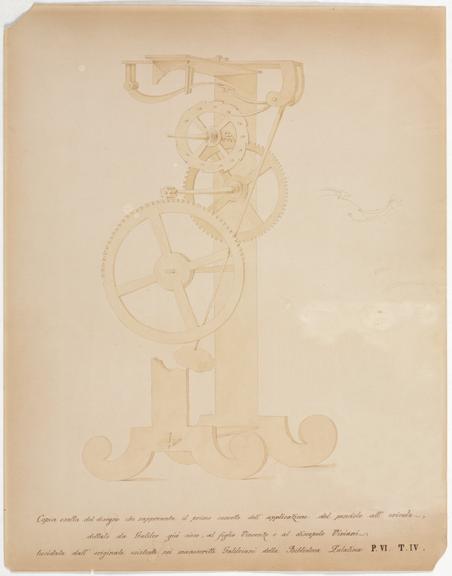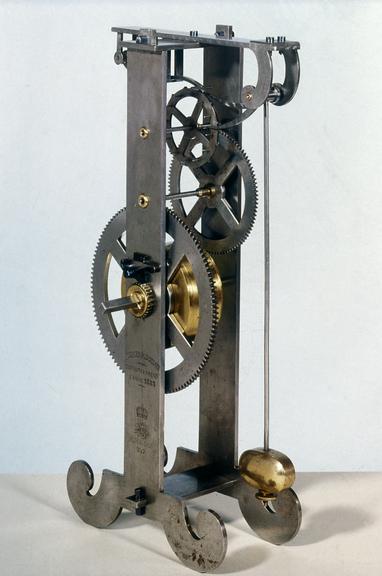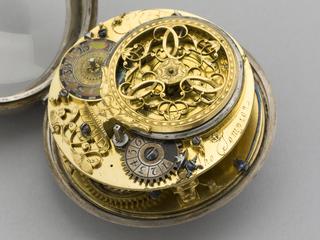Model showing the first idea of the application of the pendulum to the clock designed by Galileo in 1642, made by his son Vincenzo in 1649 and illustrated by Vincenzo Viviani, Italy. This model is by Eustachio Porcellotti, Florence, Italy, 1883.
This 19th century model is based on a drawing made by Galileo's (1564-1642) friend and biographer Viviani (1622-1703) of a pendulum clock, which Galileo designed just before his death and which was partly constructed by his son Vincenzio in 1649. It represents the first known attempt to apply a pendulum to control the rate of a clock. Galileo had observed that the time taken for a pendulum to complete one swing was almost independent of the arc through which it swung and he had used a freely swinging pendulum to time various astronomical events. He recognised the potential of using a pendulum to control a clock but died before his work could be completed.










